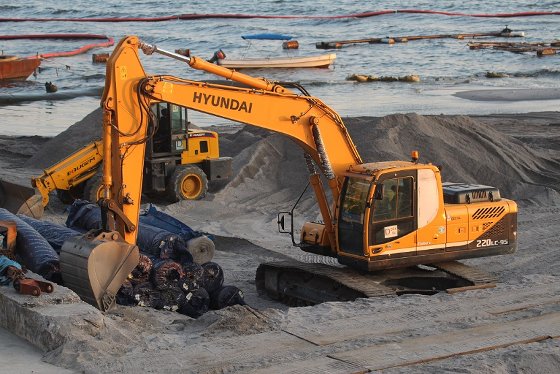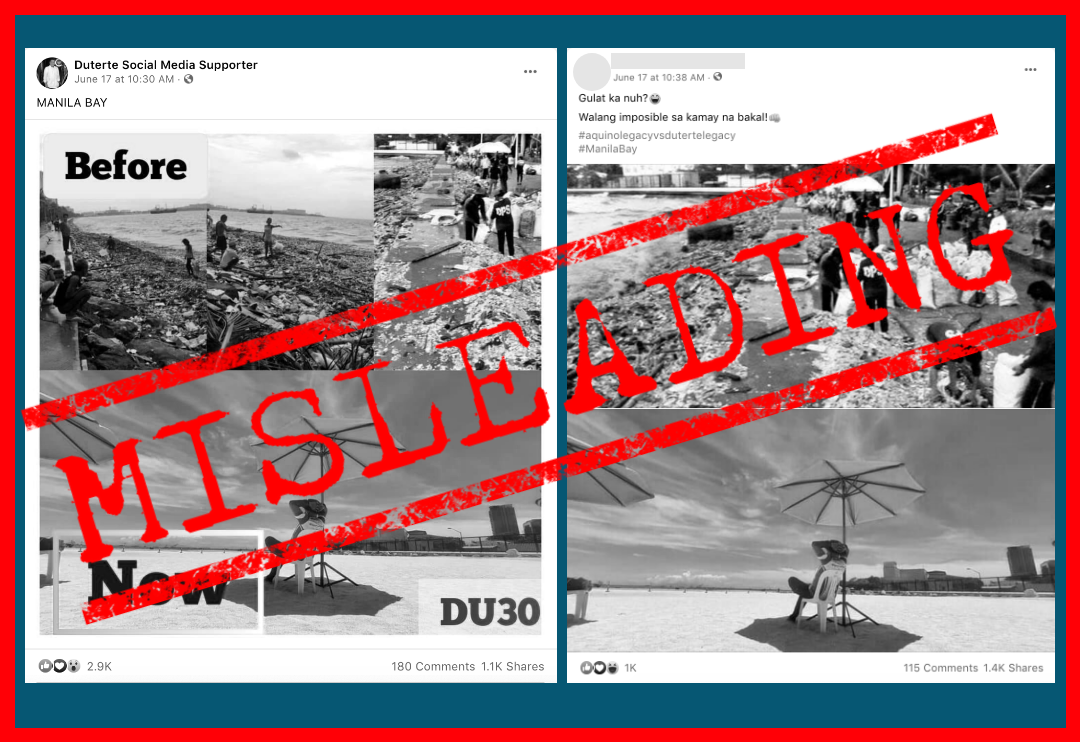 Dolomite in Manila Bay. Photo by Diuvs de Jesus.
Dolomite in Manila Bay. Photo by Diuvs de Jesus.
The Manila Bay “white sand” project did not go through an environmental impact assessment, according to an official of the Department of Environment and Natural Resources-Environmental and Management Bureau (DENR-EMB).
“It’s an enhancement project so there’s no need for the environmental impact study because this is a nourishment enhancement of the area. So under this category…it falls (under) enhancement projects,” engineer William Cuňado, officer-in-charge director of the DENR-EMB, explained in an online public forum on Sept. 16.
The virtual forum, organized by Oceana Philippines in partnership with Living Laudato Si’ Philippines (LSS) and the Archdiocese of Manila’s Ministry of Ecology, was the second in a series on the dumping of crushed dolomite rocks into a portion of the shoreline on Manila Bay near the U.S. Embassy compound.
Earlier news reports quoting a DENR statement said the agency will continue the project despite criticisms since it “passed the required environmental impact assessment” anyway.
Cuňado asserted that the project is an “enhancement project” aimed to “increase [and] improve the quality of the environment using the enhancement component, which is this one, the nourishment project.”
When asked by the organizer to make the environmental impact study available to the public, Cuňado answered: “Maybe we’ll provide you a copy of the certificate of non-coverage issued by the previous [DENR-EMB director Metodio] Turbella.”

EMB OIC Director William Cunado
EIA Legal Framework
However, advocates of environmental protection and conservation argued that the project must go through the environmental impact assessment because it would destroy the Manila Bay ecosystem.
According to environmental lawyer Kristine Argallon from Philippine Earth Justice Center, there would have been no opposition to the P389-million Manila Bay project if only the DENR has been compliant with the requirements under Philippine laws.
“If ever they are to conduct any action, project or undertaking, which significantly affects the quality of our environment, they’re required to prepare…to file and include in detail, and submit an Environmental Impact Statement (EIS),” said Argallon, referring to government agencies and private corporations.
Argallon said an EIS is a document from which the result of the Environmental Impact Assessment (EIA) study is included. She said that the EIA itself is not just a “one time” process after the project gets an Environmental Compliance Certificate (ECC).
“Isa po itong mataas na proseso na kahit bago pa lang… pre-planning pa lang ng isang proyekto hanggang sa pagkonsulta sa mga tao, sa pagsasagawa na ng proyekto, even during the monitoring, evaluation and audit, and even the project has been abandoned, continuous process po ‘yung EIA natin,” Argallon said.
(It is a primary process even at the pre-planning stage of the project up to the consultations with the people, to the implementation of the project, even during the monitoring, evaluation and audit, and even [when] the project has been abandoned, the EIA is a continuous process.)
She cited Presidential Decrees 1151 and 1586, and Proclamation 2146 as the legal bases of the Philippines’ environmental impact assessment system.
Under Proclamation 2146, EIA and ECC are necessary if the project is considered environmentally critical and within an environmentally critical area (ECA). The summary list of environmentally critical project (ECP) and ECA is laid out under the Revised Procedural Manual for DENR Administrative Order (DAO) 03-30.
According to Argallon, it is necessary that the DENR complies with these laws, given the importance of the Manila Bay and its ecosystem.
“Ang tingin po natin dito since affected ang Manila Bay and it’s also a very important ecosystem…nangangailangan na magkaroon [ito] ng EIA and it must be comprehensive and holistic process, which must involve the overall community na nakapalibot dito,” she said.
(In our view, since this affects Manila Bay and it’s also a very important ecosystem, it needs to have an EIA (environmental impact assessment) and it must be comprehensive and holistic process which must involve the overall community surrounding it.)
Environmental groups initiated an online petition last week for the declaration of Manila Bay an environmentally critical area, and called for a stop to and investigation of the dumping of crushed dolomite rocks on a portion of the baywalk on Roxas Boulevard.
The petition –signed by environmentalists, fisherfolk, church groups, and individuals – was addressed to the DENR, Department of Agriculture/Bureau of Fisheries and Aquatic Resources, the Senate and House of Representatives, the Ombudsman, Manila city government and the National Historical Commission.
To Argallon, Manila Bay is “not just a tourist spot, it’s not just a cultural heritage, but it also has something to do with the livelihood of the people and food security, especially at a time like this.” She questioned the timeliness of implementing the project given the gravity of the coronavirus disease (COVID-19) pandemic.





